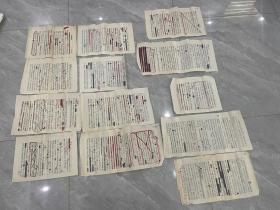
Statistical Arbitrage:Algorithmic Trading Insights and Techniques (Wiley Finance)
品相好 请看图
¥ 400.9 九品
仅1件
河南平顶山
认证卖家担保交易快速发货售后保障
作者Andrew Pole
出版社Wiley
出版时间2007-10
装帧精装
货号h7-7b
上书时间2024-07-04
- 在售商品 暂无
- 平均发货时间 9小时
- 好评率 暂无
- 店主推荐
- 最新上架
商品详情
- 品相描述:九品
图书标准信息
- 作者 Andrew Pole
- 出版社 Wiley
- 出版时间 2007-10
- ISBN 9780470138441
- 装帧 精装
- 开本 其他
- 纸张 其他
- 【内容简介】
- 《统计套利》什么是统计套利?假设,工商银行和建设银行股票价差大于1元的情况很少,那么当市场的价格波动导致建设银行的股票价格比工商银行高出1元时,你可以通过卖出建设银行股票、买进工商银行股票构建投资组合;当两家公司的股票价差回归到1元以内时,做相反的交易,从而获得交易收益。如何通过股指期货和股票联动,利用市场暂时的失灵,获得无风险收益,是很多人的想法。如果想长期获得收益,需要通读本书,理解统计套利的精髓。《统计套利》作者具有多年运作统计套利对冲基金的管理经验,通过阅读本书,你可以探究统计套利的真正含义,了解
- 【作者简介】
- Andrew Pole is a Managing Director at TIG Advisors, LLC, a registered investment advisor in New York. He specializes in quantitative trading strategies and risk management. This book is the result of his own research and experience running a statistical arbitrage hedge fund for eight years. Pole is also the coauthor of Applied Bayesian Forecasting and Time Series Analysis.
- 【目录】
-
Preface.
Foreword.
Acknowledgments.
Chapter 1. Monte Carlo or Bust.
Beginning.
Whither? And Allusions.
Chapter 2. Statistical Arbitrage.
Introduction.
Noise Models.
Reverse Bets.
Multiple Bets.
Rule Calibration.
Spread Margins for Trade Rules.
Popcorn Process.
Identifying Pairs.
Refining Pair Selection.
Event Analysis.
Correlation Search in the Twenty-First Century.
Portfolio Configuration and Risk Control.
Exposure to Market Factors.
Market Impact.
Risk Control Using Event Correlations.
Dynamics and Calibration.
Evolutionary Operation: Single Parameter Illustration.
Chapter 3. Structural Models.
Introduction.
Formal Forecast Functions.
Exponentially Weighted Moving Average.
Classical Time Series Models.
Autoregression and Cointegration.
Dynamic Linear Model.
Volatility Modeling.
Pattern Finding Techniques.
Fractal Analysis.
Which Return?
A Factor Model.
Factor Analysis.
Defactored Returns.
Prediction Model.
Stochastic Resonance.
Practical Matters.
Doubling: A Deeper Perspective.
Factor Analysis Primer.
Prediction Model for Defactored Returns.
Chapter 4. Law of Reversion.
Introduction.
Model and Result.
The 75 percent Rule.
Proof of the 75 percent Rule.
Analytic Proof of the 75 percent Rule.
Discrete Counter.
Generalizations.
Inhomogeneous Variances.
Volatility Bursts.
Numerical Illustration.
First-Order Serial Correlation.
Analytic Proof.
Examples.
Nonconstant Distributions.
Applicability of the Result.
Application to U.S. Bond Futures.
Summary.
Appendix 4.1: Looking Several Days Ahead.
Chapter 5. Gauss is Not the God of Reversion.
Introduction.
Camels and Dromedaries.
Dry River Flow.
Some Bells Clang.
Chapter 6. Interstock Volatility.
Introduction.
Theoretical Explanation.
Theory versus Practice.
Finish the Theory.
Finish the Examples.
Primer on Measuring Spread Volatility.
Chapter 7. Quantifying Reversion Opportunities.
Introduction.
Reversion in a Stationary Random Process.
Frequency of Reversionary Moves.
Amount of Reversion.
Movements from Quantiles Other Than the Median.
Nonstationary Processes: Inhomogeneous Variance.
Sequentially Structured Variances.
Sequentially Unstructured Variances.
Serial Correlation.
Appendix 7.1: Details of the Lognormal Case in Example.
Chapter 8. Nobel Difficulties.
Introduction.
Event Risk.
Will Narrowing Spreads Guarantee Profits?
Rise of a New Risk Factor.
Redemption Tension.
Supercharged Destruction.
The Story of Regulation Fair Disclosure (FD).
Correlation During Loss Episodes.
Chapter 9. Trinity Troubles.
Introduction.
Decimalization.
European Experience.
Advocating the Devil.
Stat. Arb. Arbed Away.
Competition.
Institutional Investors.
Volatility Is the Key.
Interest Rates and Volatility.
Temporal Considerations.
Truth in Fiction.
A Litany of Bad Behavior.
A Perspective on 2003.
Realities of Structural Change.
Recap.
Chapter 10. Arise Black Boxes.
Introduction.
Modeling Expected Transaction Volume and Market Impact.
Dynamic Updating.
More Black Boxes.
Market Deflation.
Chapter 11. Statistical Arbitrage Rising.
Catastrophe Process.
Catastrophic Forecasts.
Trend Change Identification.
Using the Cuscore to Identify a Catastrophe.
Is It Over?
Catastrophe Theoretic Interpretation.
Implications for Risk Management.
Appendix 11.1: Understanding the Cuscore.
Bibliography.
Index.
点击展开
点击收起
— 没有更多了 —


























以下为对购买帮助不大的评价